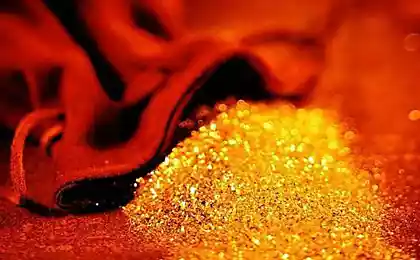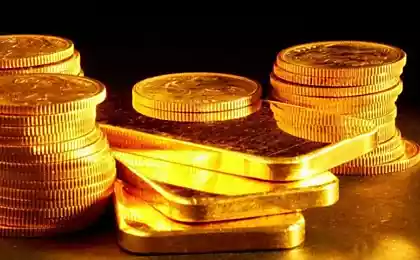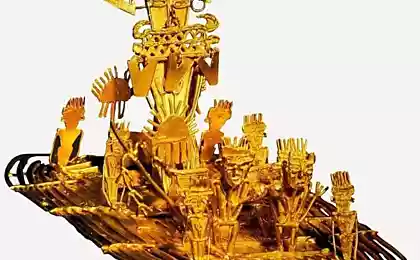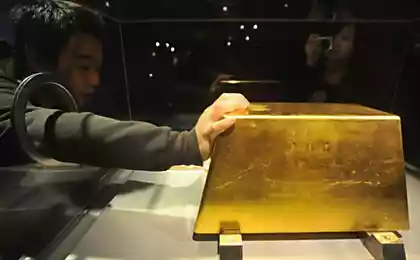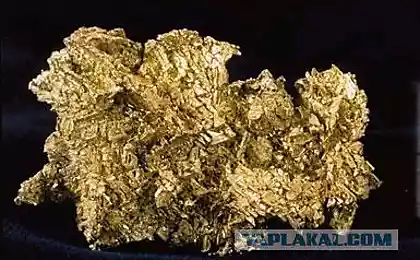382
Spice gold
1519 Pacific expedition of five ships under the command of Magellan — at the behest of king Charles V sent round the world trip. Three years lasts swimming. The winds and the fogs, storms and reefs, disease, and attacks of the natives... Magellan Himself was killed in the Philippine Islands. Of the 265 people survived only 18. Died four vessels. But the precious cargo brought on the remaining ship, not only reimbursed all the costs of the expedition, but also made a profit! Brought the vehicle: gold? Gems? No. Cloves.
Yes, in those days spices were valued on a par with gold. And sometimes more...
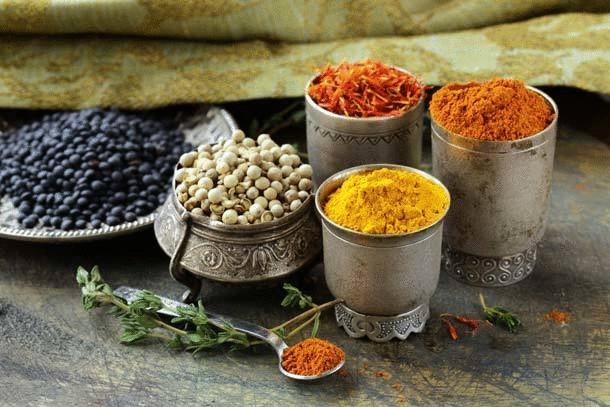
History of use of spices in Europe goes back centuries. To V century monopoly in the trade with the East became Byzantium, and the center of Commerce — its capital, Constantinople. Spices brought here by Arab merchants, and partially get into Europe through the Spaniards. Returning home after the capture in 1099 Jerusalem, the crusaders were known to Europeans spices: pepper, cinnamon and Mace and nutmeg. Mace was first used as incense at the coronation of Henry IV. In medieval Europe spices were used much more widely and in greater quantities than at present, for preparations of products for the future, for long term storage. Tea, coffee and cocoa did not yet know, and everyday beverages served honey infusions, beer and wine, flavored with spices. They were used in the rites of the Catholic Church. Many spices widely used as medicines.
The palm of Byzantium intercepts Venice, persuaded the Pope innocent III in the form of an exception to allow her to conduct the spice trade with the Muslims. Later Venice joined Genoa and Pisa. The price of spices so enormously increased that even reflected in the French saying "dear as pepper". But cinnamon was not ashamed to present as a precious gift to the king, Emperor, or even Pope. It becomes clear that no new sea routes to India and the East extension of the importation of spices to Europe is unrealistic.
And here Vasco da Gama in 1408 opens the route to India, rounding Africa from the South. He brings pepper, cloves, ginger and cinnamon. Having sold the goods, pays all expenses, and three years later makes repeated swimming. In 1492 Christopher Columbus was trying to find another route to India, sailing West. But — discovers America, which will soon provide Europe with new types of spices — allspice, vanilla, allspice, and others.
Today in home cooking is used no more than 20 spices. And there are about 150! Spices are very different according to which part and in what form (fresh or dried) are eaten: roots, bulbs, bark, flowers, fruits, leaves or buds. We think that we know everything about them, but very often use not intended. And instead to emphasize the taste of the dish or create a unique tinge of flavor, spice (not without our help) just hammer it.
Besides the well-known spice has a lot of "undiscovered potential". Not disclosed to us. To cite just three examples of "old friends" to realize how little we actually know about them.
Carnation. The dried, unopened flower buds of the clove tree are among the most ancient of known spices. Motherland — Indonesia. In China and India were known long before our era. The most cultivated in Madagascar, Zanzibar, and the Moluccas, in India, Sri Lanka and Guinea. In Roman times, cloves were valued even higher than gold. Came to Europe via Ceylon. The clove tree attains a height of 10-20 m. it Blooms twice a year. The flowers are white with a purple calyx. Get a carnation from buds which are harvested when they start to turn red. Dried in the sun or in the dryer, they become brown. The main component of clove essential oil. In dentistry, clove oil has been used as a good antiseptic. Clove has a strong peculiar aroma and spicy hot taste. Used as a spice and medicine. Used for the preparation of the bitter digestive liqueurs, hot drinks with wine, punches and fruit drinks, to dishes of red cabbage, pork, lamb, venison, dark meat gravy, when marinating herring, mushrooms, aspic of meat. With onions and kohlrabi leaves improves the taste of sauerkraut.
Black pepper is the most well known and used. His birthplace — India. It is described more in Sanskrit. The plant is a climbing shrub up to 15 m tall. After flowering grow round fruit; at first they are green, then become yellow or red. Grown in Sri Lanka, Java, Sumatra, Borneo and Brazil. Growing on tall rods similar to hops. Begins to bear fruit after three years. Harvested when the fruits begin to take on a red color and dried in the sun. In the process of drying the fruits turn black. Good spice should be not only spicy, but flavorful. The severity of pepper depends on the content of piperine. Black pepper promotes digestion. Used for soups, gravies, sauces, vegetable salads, marinades, and for cooking all types of meat, poultry, beans, peas, lentils, cheeses, fish and canning vegetables.
Cinnamon. It is obtained from the inner part of the cortex cinnamomi Ceylon. His birthplace — Ceylon, Brazil, Java. Cultivated in China, Borneo, Sumatra, Mauritius, almost the entire tropical region of Asia. About using cinnamon for even 2800 BC shows the book about the plants of the Emperor Shen Nung Kwai. Korisnik Ceylon reaches a height of 6-12 m. it is Cultivated in moist soils. Cinnamon is distilled from the bark of young shoots cinnamomi, which has been growing for several years. Two years later they remove the leaves, cut into pieces with a length of 20 cm, the bark is removed, dried in the sun and sorted. In the process of drying cinnamon gets its yellow-brown color. Edge wrapped inside, and there are so-called double tubes.
Cinnamon helps digestion and is appetizing and strengthens the stomach. It has a strong peculiar aroma, spicy, spicy sweet flavor. In our kitchen is used in all dishes with a lot of sugar: fruit soups, casseroles, compotes, jelly, puddings, pies, baked apples, liqueurs, grog, punch, mulled wine and sweets of all kinds. And also in poultry dishes. Many people like cinnamon in coffee.
источник:newacropolis.ru
Source: /users/1077
Yes, in those days spices were valued on a par with gold. And sometimes more...

History of use of spices in Europe goes back centuries. To V century monopoly in the trade with the East became Byzantium, and the center of Commerce — its capital, Constantinople. Spices brought here by Arab merchants, and partially get into Europe through the Spaniards. Returning home after the capture in 1099 Jerusalem, the crusaders were known to Europeans spices: pepper, cinnamon and Mace and nutmeg. Mace was first used as incense at the coronation of Henry IV. In medieval Europe spices were used much more widely and in greater quantities than at present, for preparations of products for the future, for long term storage. Tea, coffee and cocoa did not yet know, and everyday beverages served honey infusions, beer and wine, flavored with spices. They were used in the rites of the Catholic Church. Many spices widely used as medicines.
The palm of Byzantium intercepts Venice, persuaded the Pope innocent III in the form of an exception to allow her to conduct the spice trade with the Muslims. Later Venice joined Genoa and Pisa. The price of spices so enormously increased that even reflected in the French saying "dear as pepper". But cinnamon was not ashamed to present as a precious gift to the king, Emperor, or even Pope. It becomes clear that no new sea routes to India and the East extension of the importation of spices to Europe is unrealistic.
And here Vasco da Gama in 1408 opens the route to India, rounding Africa from the South. He brings pepper, cloves, ginger and cinnamon. Having sold the goods, pays all expenses, and three years later makes repeated swimming. In 1492 Christopher Columbus was trying to find another route to India, sailing West. But — discovers America, which will soon provide Europe with new types of spices — allspice, vanilla, allspice, and others.
Today in home cooking is used no more than 20 spices. And there are about 150! Spices are very different according to which part and in what form (fresh or dried) are eaten: roots, bulbs, bark, flowers, fruits, leaves or buds. We think that we know everything about them, but very often use not intended. And instead to emphasize the taste of the dish or create a unique tinge of flavor, spice (not without our help) just hammer it.
Besides the well-known spice has a lot of "undiscovered potential". Not disclosed to us. To cite just three examples of "old friends" to realize how little we actually know about them.
Carnation. The dried, unopened flower buds of the clove tree are among the most ancient of known spices. Motherland — Indonesia. In China and India were known long before our era. The most cultivated in Madagascar, Zanzibar, and the Moluccas, in India, Sri Lanka and Guinea. In Roman times, cloves were valued even higher than gold. Came to Europe via Ceylon. The clove tree attains a height of 10-20 m. it Blooms twice a year. The flowers are white with a purple calyx. Get a carnation from buds which are harvested when they start to turn red. Dried in the sun or in the dryer, they become brown. The main component of clove essential oil. In dentistry, clove oil has been used as a good antiseptic. Clove has a strong peculiar aroma and spicy hot taste. Used as a spice and medicine. Used for the preparation of the bitter digestive liqueurs, hot drinks with wine, punches and fruit drinks, to dishes of red cabbage, pork, lamb, venison, dark meat gravy, when marinating herring, mushrooms, aspic of meat. With onions and kohlrabi leaves improves the taste of sauerkraut.
Black pepper is the most well known and used. His birthplace — India. It is described more in Sanskrit. The plant is a climbing shrub up to 15 m tall. After flowering grow round fruit; at first they are green, then become yellow or red. Grown in Sri Lanka, Java, Sumatra, Borneo and Brazil. Growing on tall rods similar to hops. Begins to bear fruit after three years. Harvested when the fruits begin to take on a red color and dried in the sun. In the process of drying the fruits turn black. Good spice should be not only spicy, but flavorful. The severity of pepper depends on the content of piperine. Black pepper promotes digestion. Used for soups, gravies, sauces, vegetable salads, marinades, and for cooking all types of meat, poultry, beans, peas, lentils, cheeses, fish and canning vegetables.
Cinnamon. It is obtained from the inner part of the cortex cinnamomi Ceylon. His birthplace — Ceylon, Brazil, Java. Cultivated in China, Borneo, Sumatra, Mauritius, almost the entire tropical region of Asia. About using cinnamon for even 2800 BC shows the book about the plants of the Emperor Shen Nung Kwai. Korisnik Ceylon reaches a height of 6-12 m. it is Cultivated in moist soils. Cinnamon is distilled from the bark of young shoots cinnamomi, which has been growing for several years. Two years later they remove the leaves, cut into pieces with a length of 20 cm, the bark is removed, dried in the sun and sorted. In the process of drying cinnamon gets its yellow-brown color. Edge wrapped inside, and there are so-called double tubes.
Cinnamon helps digestion and is appetizing and strengthens the stomach. It has a strong peculiar aroma, spicy, spicy sweet flavor. In our kitchen is used in all dishes with a lot of sugar: fruit soups, casseroles, compotes, jelly, puddings, pies, baked apples, liqueurs, grog, punch, mulled wine and sweets of all kinds. And also in poultry dishes. Many people like cinnamon in coffee.
источник:newacropolis.ru
Source: /users/1077
